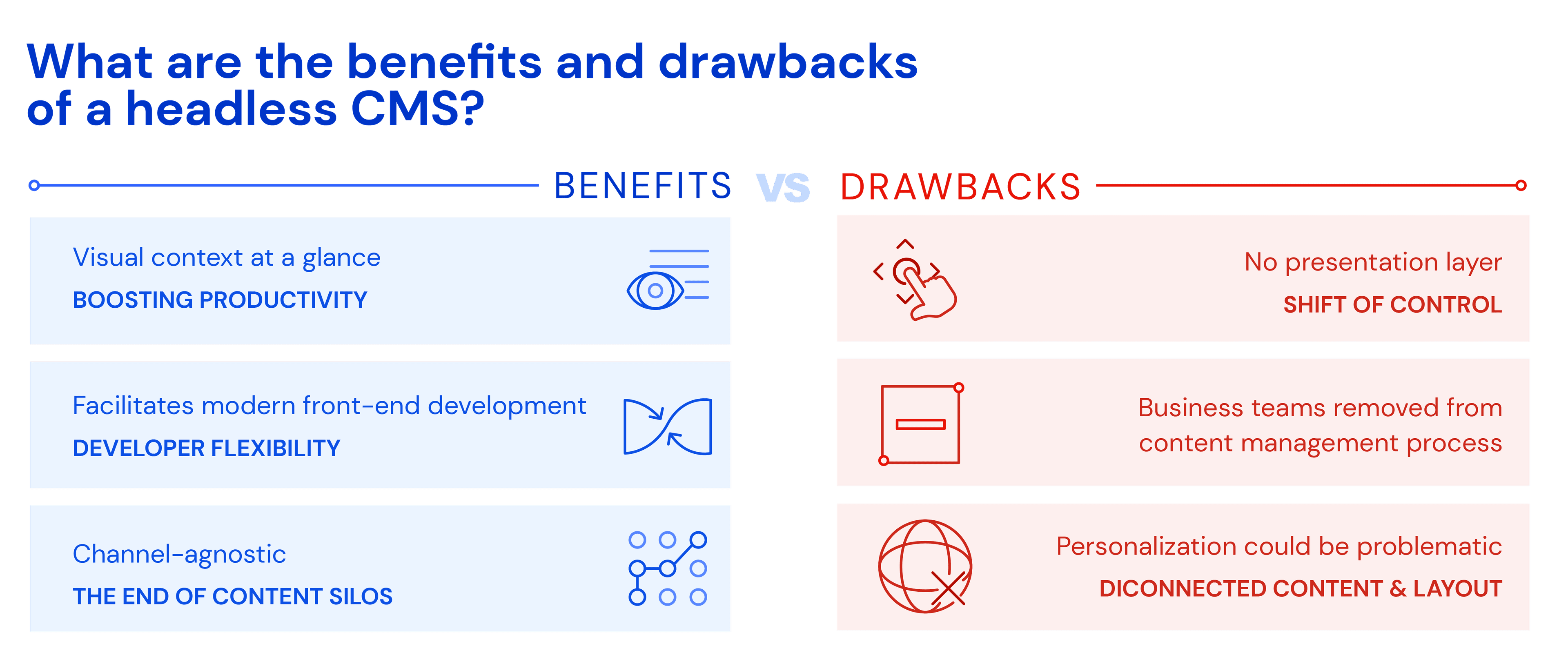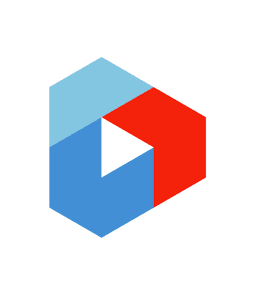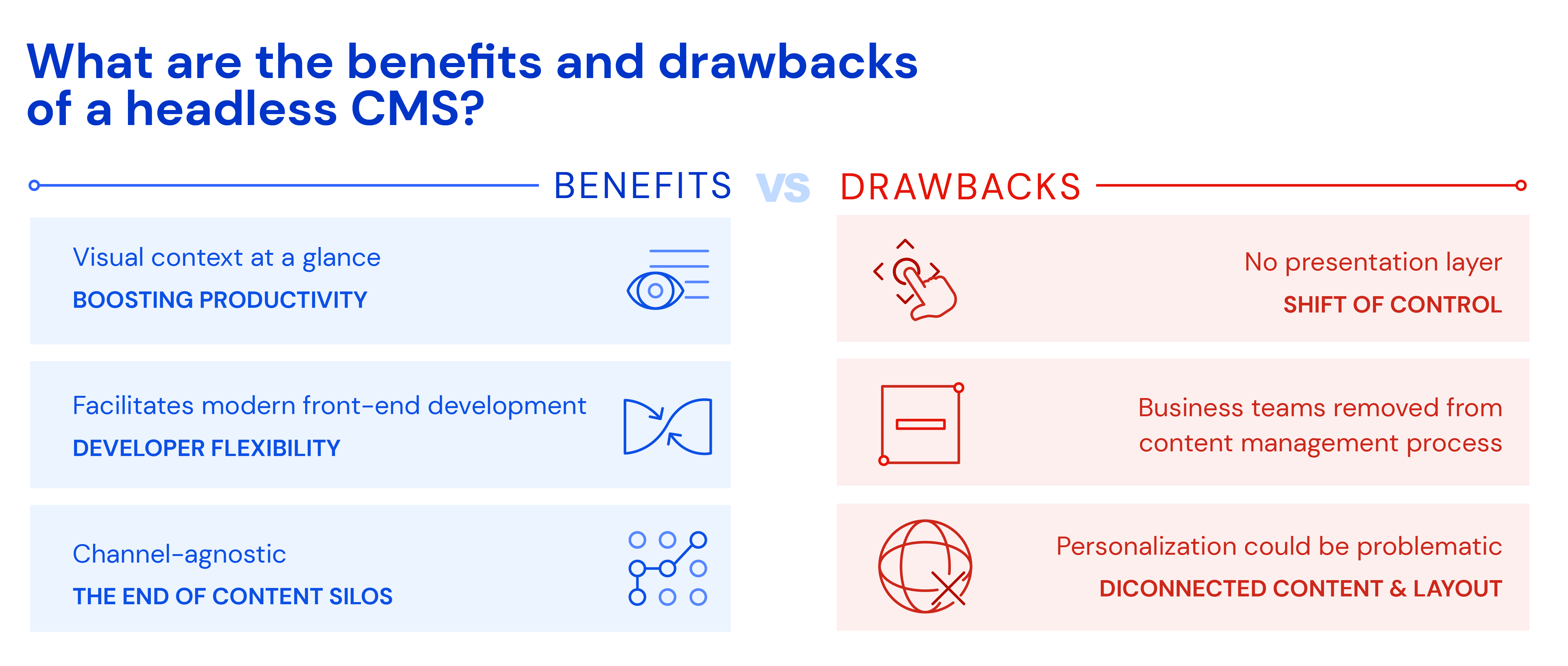Uniform blog/Content management: a complete guide
Content management: a complete guide
Content management: a complete guide
The top-priority task for building websites is content management, that is, organizing, publishing, and storing content online to ensure that all content is in order and easy to find. Toward that end, webmasters leverage a software app called content management system (CMS). This guide explains the fundamentals of CMSes and their roles along with recommendations on how to optimize your CMS.
What is a CMS?

A CMS is a software app for creating, editing, storing, and delivering digital content, complete with features that help organize and manage webpages. The three common types of CMSes are—
- Open-source CMSes, which are free.
- On-premise CMSes, which are developed and maintained by vendors.
- Software-as-a-service (SaaS) CMSes, which are cloud-based and hosted and managed by third-party providers.
See our full guide on what is a CMS?
Depending on the complexity of your website's architecture, various content types are available for different purposes. Examples are HTML pages, Cascading Style Sheets (CSS), JavaScript files, images, audio files, video files, and media of other formats.
CMSes typically comprise the following key components, which support the features for managing content:
- Content repository, in which all digital assets reside for easy access.
- Database, which is a collection of user preferences and changes for future reference.
- User interface (UI), on which you access and manage resources.
- Content editor, with which you create, edit, and delete content in websites or apps.
- Workflow manager, which automates processes, such as those for approving updates or publishing content.
- Search engine optimization (SEO) tools, which optimize webpages for higher rankings in search-engine results like those from Google.
How does a CMS work?

On receipt of a viewer request, a CMS reads and organizes the information before outputting it to the webpage or in the file format requested. For example, a click of the link to a blog post in an email from you alerts the CMS of a request for content from your website. The CMS then takes the blog post from its repository, reads it and formats it according to the viewer’s specifications (mobile layout, desktop layout, etc.), and sends the formatted page to the viewer.
What are the core features of a CMS?

Most CMSes offer similar core features, as described below.
User roles and role-based content management
The teams who work with a CMS are on different levels. For example, writers and editors, though usually on the same level, have different roles in the system. Project managers and webmasters, being on a higher level, need more control of the system.
For the purpose of assigning tasks and managing content, CMSes must offer user roles and role-based access control with specific rules that allow or restrict team members from performing certain tasks in the system. For example, writers are allowed to create content only but editors can edit and publish it, clarifying the various individual responsibilities within the organization.
Well-defined user roles reduce the risk of people accidentally “breaking” the website while accessing a part of the CMS they’re unfamiliar with.
Manage content in the cloud
Given that the cloud is an excellent place for content storage and management, cloud-based CMSes offer significant advantages, notably scalability, accessibility, and cost savings in addition to the following benefits:
- Accessible from all online devices, cloud-based CMSes can scale up or down as required.
- Cloud-based CMSes require no hardware or software installation, costing less than traditional on-premise CMSes.
- Since they can access their website from any online device, geographically distributed teams can collaborate seamlessly.
- Certain cloud-based CMSes offer pay-as-you-go pricing models, which translate to cost savings in the long run.
To ensure that your cloud-based CMS is always up and running, check out its built-in front-end design, content delivery networks (CDNs), and hosting services:
- As the UI of a website or app, the front end must be intuitive so that teams can efficiently interact with the CMS. Be sure to determine how the front end affects how the published content looks on your website.
- CDNs store copies of your website or app on multiple servers so visitors experience minimal latency.
- Hosting services provide dedicated storage space for websites or apps on remote servers.
Content collaboration
An efficacious CMS must offer the following features to help teams collaborate on projects no matter their location:
- User comments serve as a sound, one-stop basis for team members to discuss project-related changes or ideas, fostering transparency and a focus on the common goals.
- Task assignments along with due dates are instrumental in managing workloads.
- Workflow validation is a paramount step for the approval process, which precedes publication. That step ensures that all content is up to standard and coordinates cross-team collaboration.
- Version control, an excellent organization tool, tracks content updates so that teams can compare different versions side by side and make changes without starting from scratch.
Creation of websites and apps
Most CMSes come with website-building tools, such as drag-and-drop editors, themes, and plug-ins for customizing sites fast. For example, you can—
- Arrange various elements on a page with a drag-and-drop editor without any code.
- Customize the look and feel of your website with themes in just a few clicks.
- Extend your website's functionality with additional features by means of plug-ins.
Additionally, in some cases, you can easily develop or customize web or mobile apps—without starting afresh—with HTML5, CSS3, JavaScript frameworks, etc. through CMS tools.
Also, to maintain a website on a different CMS, you can simply switch or migrate to that system.
What is a headless CMS?

As more devices, such as smartwatches and smart speakers, become available for viewing digital content, traditional CMSes, called monoliths, can be challenging because their back end and front end are closely tied together, rendering content display on new devices problematic.
That issue does not exist in headless CMSes, which separate the content from the presentation layer so that developers can scale and reuse the content for various devices, platforms, and apps. Moreover, headless CMSes offer the same features as traditional CMSes, as described in a previous section.
Therefore, for organizations that must manage large amounts of data or deliver it across multiple channels and devices quickly, headless CMSes are the answer. Check out our guide on comparing headless CMS for the pros and cons of the most popular headless CMSes.
See our full guide on what is a headless CMS?
Benefits of Headless CMS
The most significant benefits of headless CMSes is scalability and content reuse at channels and devices for a consistent and seamless experience.

Headless CMSes also offer three other major benefits:
- A focus on their main role on the part of content creators. Decoupling of the content and presentation layers leads to a deeper focus from content creators who need not worry about how the content looks.
- Versatility for modern front-end development. Developers are free to use the latest technologies, such as HTML5 and JavaScript frameworks.
- No channel restrictions. Headless CMSes facilitate content delivery to all channels, from websites and apps to voice assistants and Internet of Things (IoT) devices.
Challenges of Headless CMS
Before choosing a headless CMS, be aware of these drawbacks:
- Business teams are forced to relinquish control to developers. The separation of content and presentation requires that developers take a more active role in setting up the CMS, which might not sit well with nontechnical teams and project stakeholders.
- Headless CMSes are adopting monolithic practices. It’s increasingly clear that no system can—or should—be the end-all and be-all. Each system has a role to play in an architecture.
- You must store channel-specific content, hence polluting your CMS. To avoid that issue, adopt a CMS that manages content for delivery across channels without complicating your data model or expanding the workload of your content authors.
- Personalization becomes troublesome. Setting up and maintaining the decoupled architecture of headless CMSes is complex and could be time-consuming.
The content-management process

Ultimately, the goal of content management is to create immersive, compelling content that meets the needs of your target audience. Here are a few tips for mounting a successful process:
- Organization: Pinpoint the type of content you want to produce and its location on your website.
- Creation: Build content according to the processes or standards that are in place.
- Storage: Store the content in an organized fashion for easy access and updates.
- Workflow: Implement a workflow that includes reviews and approvals by the appropriate stakeholders before publication.
- Editing: Edit content to ensure clarity, readability, and compliance with your organization’s style guide or standards.
- Publishing: Publish the content on the appropriate platforms and channels.
- Removal: Delete outdated or irrelevant content.
See our full guide on the content-management process.
Content governance

Content governance sets rules and standards for content creation, management, and distribution with a focus on three main areas so that all content is up-to-date, relevant, and accurate:
- Policies: Establish guidelines on how to build and maintain content, such as copyright laws, user rights, and quality standards.
- Processes: Describe the steps for creating, managing, editing, and publishing content.
- Tools: Select tools and technologies that help streamline your content management process: CMSes, databases, cloud-storage solutions.
Stronger collaboration and organization
The key to successful content governance is strong collaboration among all stakeholders, from creators to editors, marketers, developers, and others. To achieve that, set up the right processes and systems for updating content and organizing it for easy access. What follows is transparent and sound collaboration among teams and departments, invariably resulting in high-quality content.
User friendliness
CMSes that are hard to navigate hinder content governance so be sure to adopt one that makes content search, editing, and collaboration a smooth sail. For example, features like tagging, categorization, and search are desirable for quickly locating specific content in addition to keeping content uniform and teams on the same page.
SEO tools and plug-ins
Search engine optimization (SEO) leads to high-quality and on-point content, playing a crucial role in the governance that relates to quality and distribution.
Some CMSes come with SEO tools for keyword research, backlink analysis, and copy optimizations. Be sure to take advantage of them so that your content appears in organic search results for the keywords that are most relevant to your business.
How to Choose a CMS

Here are the three most important considerations:
- Features. Does the CMS offer the functionality and tools that you need for effective content management? Examples are editing and publishing capabilities, content-organization features, workflow processes, and settings for security and live previews.
- Usability. Can you easily find and work with the content you need with the CMS? Does the CMS boast an intuitive navigation mechanism and a modern design interface? A good way to find out the answers is to have developers test out various CMSes.
- Integration with other tools for marketing or analysis. For example, if you leverage a marketing automation platform or analytics tool like Google Analytics, see that your CMS can integrate with it so that all your data is in one place.
- Cost. Does the cost of the CMS, complete with all the features you desire, fall within your budget? If possible, request a demo before making your final decision.
See our full guide on how to choose a headless CMS?
An introduction to Uniform and digital experience composition

Uniform was built by a team that’s well versed with content management and well aware of its common pitfalls, among them a lock-in to a specific architecture and a dire need for developer assistance to get anything done. As a digital experience composition platform (DXCP), Uniform offers a unique and scalable approach for building business websites and other digital experiences.
By leveraging Uniform’s capabilities for integrating data from various systems, including CMSes, DAMs, and PIMs, businesses can channel content from disparate sources without custom coding. Additionally, because it supports various systems simultaneously, Uniform is ideal for migrating CMS or leaving legacy systems in place.
Do read the rest of this CMS guide for details on Uniform’s vital role in managing your digital-transformation journey.
CMS is an app for creating, editing, storing, and delivering content, complete with features that help organize and manage webpages. The three common types of CMSes are—
- Open-source CMSes, which are free.
- On-premise CMSes, which are developed and maintained by vendors.
- Software-as-a-service (SaaS) CMSes, which are cloud-based and hosted and managed by third-party providers.














.png&w=1080&q=90)
.png&w=1080&q=90)
.png&w=1080&q=90)